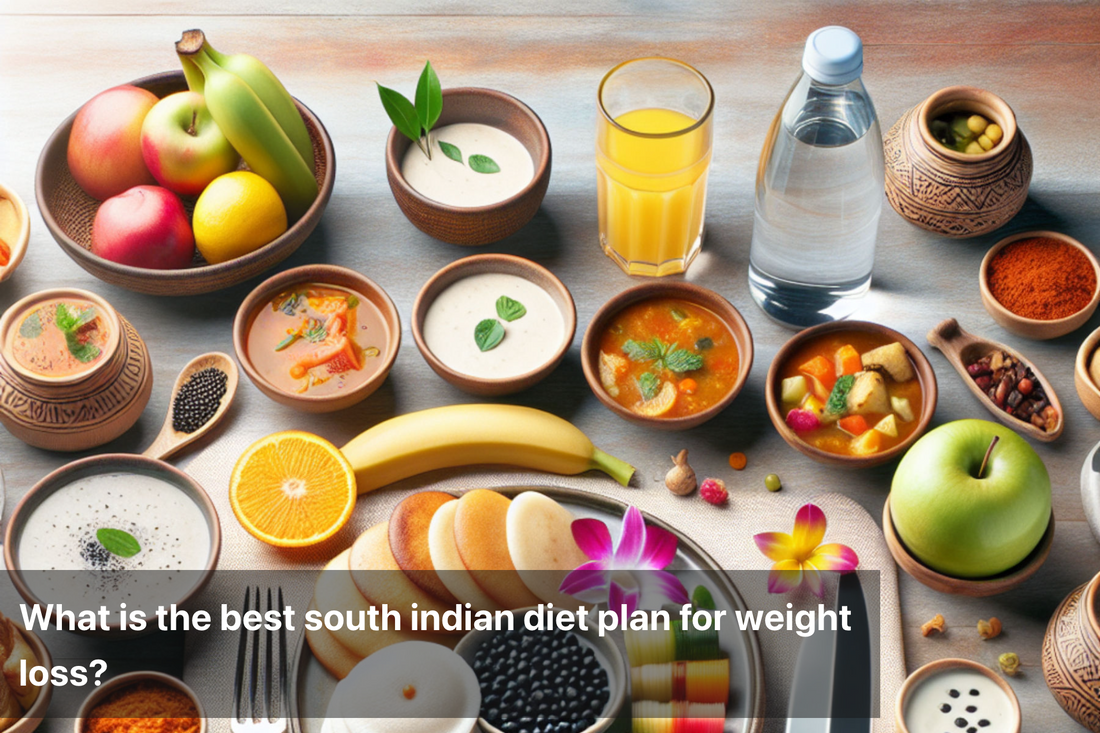
What is the best South Indian diet plan for weight loss?
Share
The South Indian diet is increasingly recognized for its role in weight loss, thanks to its emphasis on fresh, whole foods and balanced nutrient intake. One of the primary benefits of this diet is its reliance on ingredients that are rich in fiber, such as lentils, whole grains, and vegetables. Foods like idli, dosa, and sambar not only offer delicious flavors but also promote satiety, reducing the likelihood of overeating.
Incorporating traditional South Indian dishes into a weight loss plan encourages healthy eating habits. The use of spices like turmeric and cumin boosts metabolism and aids digestion. Moreover, the cooking methods—like steaming or stir-frying—preserve nutrients while minimizing unhealthy fats.
This cuisine includes a wide range of vegetarian options, making it easier to maintain a balanced diet replete with vitamins and minerals. Overall, adopting a South Indian diet plan for weight loss fosters a holistic approach to health, emphasizing sustainability and mindful eating. It’s definitely worth considering if you're looking to make meaningful dietary changes.
Understanding the South Indian Cuisine
Here’s a list of specific South Indian dishes that are great for weight loss:
1. Idli
Idlis are made from fermented rice and urad dal (black lentils), which makes them light, easy to digest, and full of probiotics. Paired with sambar (lentil soup) or chutneys, idlis are a great breakfast option for weight loss.
2. Dosa
Like idli, dosa is made from fermented rice and urad dal but is thin and crispy. It’s best eaten with vegetable sambar and coconut chutney for added nutrition.
3. Upma
Upma is a savory dish made from semolina (suji) and vegetables. It's a high-fiber, low-calorie option when cooked with minimal oil and plenty of vegetables.
4. Sambar
Sambar is a spicy lentil soup made with vegetables like carrots, beans, and tomatoes. It's rich in protein and fiber and works well with rice, idlis, or dosas.
5. Rasam
Rasam is a tangy soup made from tamarind, tomatoes, and spices. It helps with digestion and can be consumed as a side dish with rice or on its own.
Key Components of a South Indian Weight Loss Diet
When planning a South Indian diet for weight loss, focus on the following components:
Food Type |
Example |
|
|---|---|---|
Whole Grains |
Brown rice, millet, quinoa, whole wheat dosa |
Rich in fiber, keeps you fuller longer |
Lentils and Legumes |
Toor dal, moong dal, chickpeas, black-eyed peas |
High in protein and fiber, regulates blood sugar |
Vegetables |
Spinach, cabbage, carrots, tomatoes |
Low in calories, high in vitamins, aids digestion |
Healthy Fats |
Coconut oil, sesame oil, ghee |
Provides energy and supports fat metabolism |
Fermented Foods |
Idli, dosa, curd (yogurt) |
Improves gut health, boosts metabolism |
"Embrace the power of traditional South Indian flavors where balance, fiber, and wholesome ingredients work together to fuel your weight loss journey." adds Health Coach Madhavi Mahajan (PG in Sports Science, Fitness & Nutrition)
Sample South Indian Diet Plan for Weight Loss
Creating a structured meal plan is essential for successful weight loss, especially when exploring the South Indian diet. Here’s a sample week-long meal plan featuring traditional dishes, along with calorie counts and nutritional considerations.
Day 1
Breakfast: Idli with sambhar (200 calories) – Rich in protein and fiber.
Lunch: Brown rice with vegetable curry (450 calories) – Provides complex carbohydrates and vitamins.
Dinner: Rawa upma with mixed vegetables (300 calories) – Low in calories but high in fiber.
Day 2
Breakfast: Dosa with chutney (250 calories) – Offers healthy fats and carbohydrates.
Lunch: Lemon rice with peanuts (400 calories) – Packed with antioxidants.
Dinner: Sambar with quinoa (350 calories) – High in protein and amino acids.
Day 3
Breakfast: Poha with peas and nuts (230 calories) – A great source of energy and protein.
Lunch: Curd rice with cucumber (350 calories) – Good for digestion and hydration.
Dinner: Vegetable stir-fry (300 calories) – Low in calories and high in vitamins.
Days 4-7
Continue to rotate these meals, ensuring variety and balance. Include snacks like coconut water or fruits, keeping caloric intake in check.
Tips for Maintaining a South Indian Diet
Control Portions: South Indian meals, especially rice-based dishes, can be calorie-dense. Stick to controlled portions to manage calorie intake.
Cook with Less Oil: Minimize the use of oil while preparing dishes like dosa or upma. Opt for healthier oils like coconut oil in moderation.
Include Protein: Add a good amount of protein in every meal, such as dal, legumes, and yogurt, to help with muscle repair and metabolism.
Hydrate: Drink plenty of water, coconut water, or buttermilk throughout the day to stay hydrated and aid digestion.
Include Vegetables: Fill half of your plate with vegetables to add fiber and keep your meals nutrient-dense and low in calories.
Summary
The South Indian diet plan for weight loss has proven to be an effective approach to shedding those extra pounds while promoting overall health. Its emphasis on whole, nutrient-dense foods—such as lentils, vegetables, and whole grains—ensures that you receive essential vitamins and minerals
Many of the traditional dishes, from sambar to idli, are naturally low in calories yet high in fiber, allowing you to feel fuller for longer without overindulging. Importantly, the use of spices like turmeric and curry leaves not only enhances flavor but also offers additional health benefits, including improved metabolism and reduced inflammation.
As you consider incorporating this diet into your daily routine, remember to focus on balance and variety. Don’t hesitate to experiment with different recipes. It can be enjoyable to learn how to prepare and appreciate new culinary experiences.
FAQs
1. Can I have rice on a South Indian weight loss diet?
Yes, you can consume rice but opt for brown rice or quinoa for better fiber content and slow digestion.
2. Is dosa healthy for weight loss?
Yes, dosa can be healthy when made with minimal oil and paired with nutritious sides like sambar or vegetable chutneys. It is a low-calorie, high-protein meal option.
3. Is coconut oil good for weight loss in a South Indian diet?
Coconut oil can be part of a weight loss diet when used in moderation. It contains medium-chain triglycerides (MCTs), which may promote fat burning.
4. Can I drink tea or coffee on a South Indian weight loss diet?
Tea or coffee can be consumed in moderation. Opt for black tea or coffee without added sugar or choose herbal teas to boost metabolism.
5. How can I make my South Indian meals more weight-loss-friendly?
Make your South Indian meals weight-loss-friendly by controlling portion sizes, minimizing oil usage, and adding plenty of vegetables and proteins.


